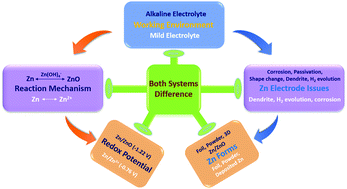Deeply understanding the Zn anode behaviour and corresponding improvement strategies in different aqueous Zn-based batteries
Abstract
Owing to the high capacity of the metallic Zn anode and intrinsically safe aqueous electrolyte, aqueous Zn-based batteries are advanced energy storage technology alternatives beyond lithium-ion batteries, providing a cost benefit, high safety, and competitive energy density. There has been a new wave of research interest across the family of Zn batteries, but fundamental understanding of the Zn electrode and its performance improvement still remain inconclusive. Based on the pH value of the electrolyte, Zn-based batteries can be divided into two types, with one adopting alkaline electrolyte and the other mild (including slightly acidic) electrolyte. As the behavior of the Zn electrode in these two distinctive systems is different, their requirements to yield excellent performance are different. In this Review, we present a comprehensive overview of the Zn electrode and its fundamentals in both systems. First, the differences and similarities of the Zn electrode in both systems are outlined. Specific attention is paid to the working principles and technical challenges. Then, Zn electrode issues and recently proposed strategies for each system are summarized and compared. Finally, a perspective on future research directions towards practical applications of aqueous Zn batteries is included.



 Please wait while we load your content...
Please wait while we load your content...